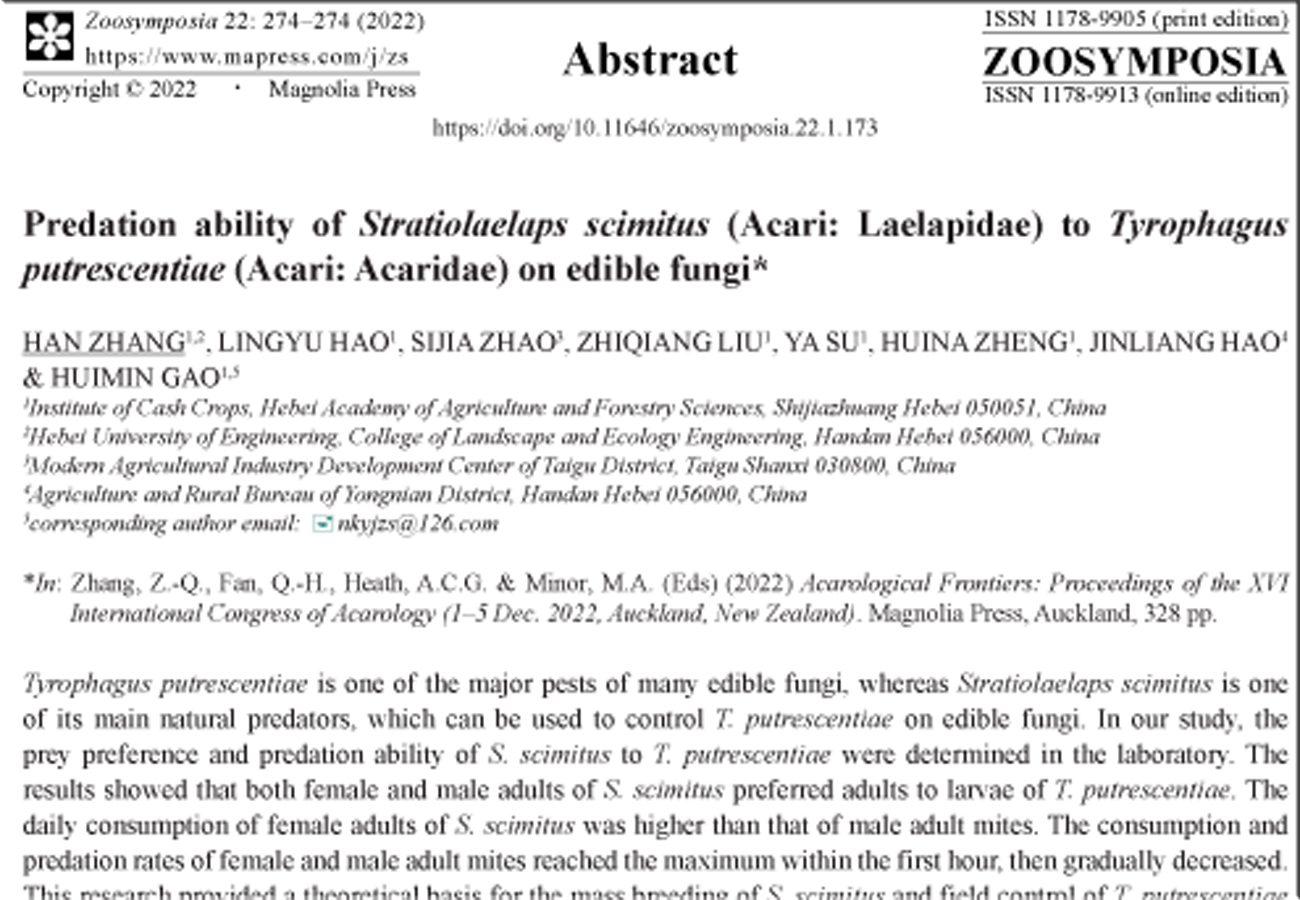Abstract
Tyrophagus putrescentiae is one of the major pests of many edible fungi, whereas Stratiolaelaps scimitus is one of its main natural predators, which can be used to control T. putrescentiae on edible fungi. In our study, the prey preference and predation ability of S. scimitus to T. putrescentiae were determined in the laboratory. The results showed that both female and male adults of S. scimitus preferred adults to larvae of T. putrescentiae. The daily consumption of female adults of S. scimitus was higher than that of male adult mites. The consumption and predation rates of female and male adult mites reached the maximum within the first hour, then gradually decreased. This research provided a theoretical basis for the mass breeding of S. scimitus and field control of T. putrescentiae for edible fungi.
References
-

